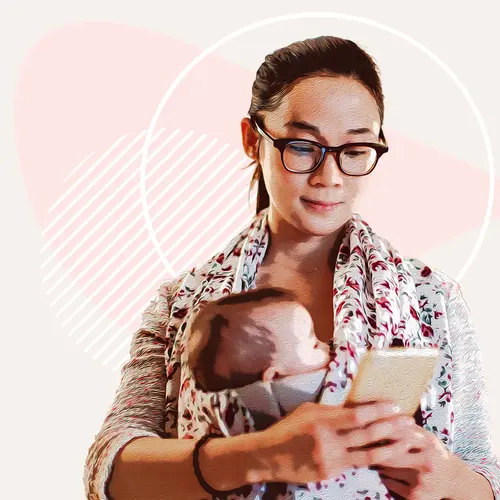Preparing a nursery is an exciting activity for most expectant parents, but while choosing a crib and a rocking chair based on your decor preferences, one of the most important purchases to be made will rarely be seen: a mattress for the baby crib.
While a crib mattress will almost always be covered by sheets, choosing the right mattress is essential for keeping your baby safe while they slumber. Read on to learn everything you need to know about choosing the right crib mattress for your baby. Remember, it's best to place your baby on their back to sleep.
Crib Mattress Safety Considerations
The American Academy of Pediatrics recommends that all babies sleep on their back on a flat, firm, separate sleep surface free of blankets, bumpers, toys, or other objects. Consider the following for baby mattress safety.
Crib Mattress Size
A crib mattress must fit in a crib properly to be safe for use, leaving no space between the mattress and the side of the crib that could trap a baby's head. The interior dimensions of a full-size crib size are regulated by the Consumer Product Safety Improvement Act of 2008 (CPSIA). For any full-size crib, choose a crib mattress at least 27 1/4 inches × 51 1/4 inches and no more than 6 inches thick.
Suppose you're using a non-full-size crib, like a convertible playpen or travel crib. In that case, CPSIA requires that the crib mattress be sold with the crib to ensure proper fit.
When fitting your crib mattress, make sure there's not a gap of more than 1/2 inch at any point when the crib mattress is centered or more than 1 inch when pushed against the perimeter. As a general rule, if you can fit more than two fingers between the mattress and the crib, the crib mattress is too small.
Crib Mattress Firmness
Babies need firmer mattresses than adults and older children. If you choose a foam crib mattress, select a denser model — you can typically find foam density information online. If you're shopping in person, place a hand on each side of the mattress and press your palms toward each other. A dense foam won't allow much compression. Dense foam mattresses also tend to be heavier, so compare the weight of different mattresses in-store or by reading online specifications.
If you're buying an innerspring crib mattress, look for a steel gauge of 15.5 or below — the lower the number, the thicker the steel — and a moderate-to-high coil count. Make sure the mattress includes border rods. These rods provide additional edge support to keep a mattress from compressing near the edges.
Is a Used Mattress Safe?
If possible, you should buy a new crib mattress. An improperly stored mattress can grow mold or become a breeding ground for bacteria. Some older crib mattresses used PBDEs (polybrominated diphenyl ethers) — flame retardants that can interfere with thyroid function, now banned in Europe and some U.S. states.
If you buy a new crib mattress, you can use it again for future children so long as you store it properly in a clean, dry location and it stays firm.
Keep Your Mattress Clear
Whatever mattress you choose, keep it clear of pillows, toys, blankets, and other objects to prevent suffocation. You should not use crib bumpers. Even the best crib mattress can be unsafe if suffocation hazards are present.
Should You Choose an Organic Crib Mattress?
Some expectant parents are worried about the chemicals used in mattress manufacturing or are looking to reduce their environmental impact by choosing an organic mattress.
While there's not a lot of comparative research available on the safety of organic mattresses versus conventional mattresses, there are a few things to consider:
Phthalates
Phthalates — industrial chemicals that make plastics softer and more durable — are commonly used in conventional mattresses and vinyl mattress covers, and the heat of a sleeping baby's body increases emissions of phthalates from the mattress. While phthalates are restricted in toys, they're not regulated in mattresses. More research is needed on the potential toxicity of phthalates, but they've been associated with health problems like infertility and asthma.
Volatile Organic Compounds (VOCs)
VOCs have been found in some crib mattresses and can "off-gas" and be breathed in by a baby. Polyurethane foam releases more VOCs than polyester foam.
Unfortunately, there's no regulation for organic mattresses, so anyone can claim that their mattress is "organic" or "natural" without having to meet specific requirements. While there is no legal standard, there are some independent organizations that may help eco-conscious parents find a mattress that works for their family.
The Global Organic Textile Standard (GOTS) is an independent certification that independently verifies organic product origins and environmentally and socially responsible processing.
Global Organic Latex Standard (GOLS) certified products may only contain raw materials with an organic origin and certified natural rubber latex.


